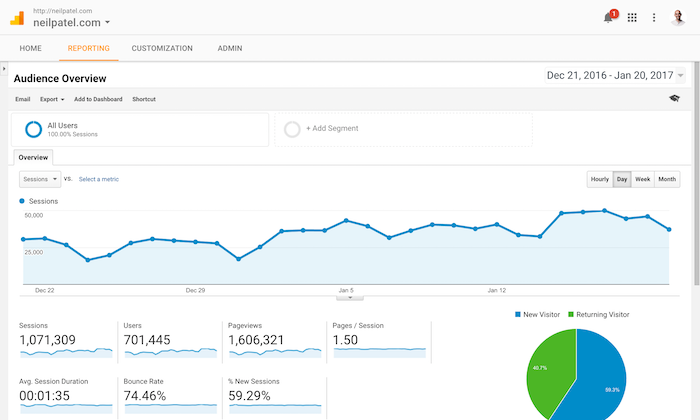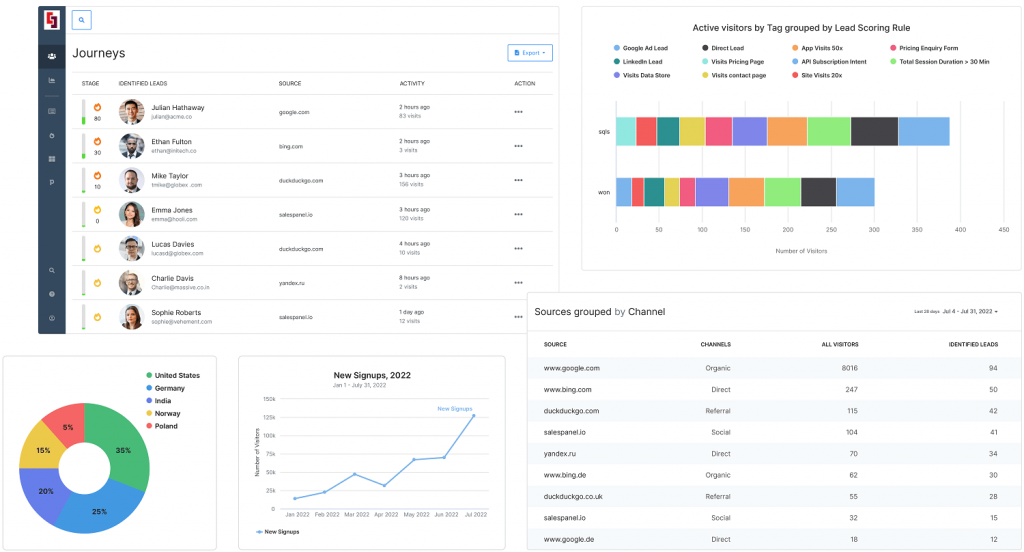To make informed decisions as a business owner or marketer, you must monitor the activity on your website. The good news is that Google Analytics is a fantastic web analytics tool that provides detailed insights. When does Google Analytics update its data, though? Are you tired of waiting for Google Analytics to update its data for hours, days, or weeks?
In this article, we’ll delve deep into the world of Google Analytics and investigate how data processing latency affects the frequency with which updates are made. We’ll also look at real-time data availability and the value of timely insights for businesses. Furthermore, we will demonstrate how Salespanel can improve your real-time tracking capabilities and assist you in making better business decisions.
Understanding how frequently Google Analytics updates its data is critical to your success, whether you own a small business or a large corporation. So, prepare yourself to learn everything there is to know about Google Analytics data updates and gain a competitive advantage in your industry!
Real-time Data in Google Analytics
Google Analytics is a powerful web analytics tool that gives businesses a real-time view of their website activity through its real-time data feature. This feature enables businesses to obtain valuable insights, such as the number of active users on the site, page views, visitor location, and traffic sources. These insights are critical in assisting businesses in making educated decisions about how to improve their website or marketing campaigns. Real-time data can be especially useful for quickly identifying trends or issues, allowing for quick action and adjustments.
However, it is critical to recognize that not all data is available in real-time. Over time, information like conversion data, e-commerce data, and user behavior requires more complex processing and analysis and may take longer to become available.

Data Processing Latency in Google Analytics
Although Google Analytics is designed to process and report on website data in real time, there may be a delay between when an event occurs on a website and when it is available to view in Google Analytics. This delay is known as website latency processing, and it is critical to understand its impact on making informed decisions based on Google Analytics website data.
To assist businesses in determining when their data will be updated in the tool, Google provides documentation on data processing latency. The processing time is contingent on variables such as the volume of data being processed, the complexity of the data, and the processing power available.
Businesses should be aware that a number of factors, including the volume of data being processed, the complexity of the data, and the processing power available, all impact data processing latency. Businesses can reduce latency by ensuring their data collection rules are correctly configured, setting up segmentation and filters, using custom variables unique to each web page, and removing unnecessary integrations with third-party applications.
Businesses can avoid slow response times when analyzing their website analytics reports and make informed decisions based on their website tracking activities monitored by Google Analytics by understanding the causes of data analytics processing latency and implementing best practices.
The Significance of Real-time Data for Proactive Marketing
Real-time data is valuable for making informed business decisions and driving results. It provides insights into website activity and enables businesses to respond quickly to changes in their industry and be proactive in their efforts.
Real-time data can also help with website personalization. Businesses can tailor their website experience to meet the preferences of their visitors by analyzing their previous engagement with the site, resulting in a more engaging user experience and higher conversions.
Furthermore, real-time data helps businesses better understand their target audience by tracking common trends and visitor preferences. This enables businesses to create content and curate messages tailored to their target audience, expanding the reach of their marketing campaigns and driving sales growth.
Real-time Analytics and Customer Journey Tracking with Salespanel
As businesses work to optimize their online presence, a tool that provides real-time analytics on website visitors is priceless. Google Analytics is a popular option but needs in-depth insights into customer journeys and individual leads. Salespanel can help with that.
Salespanel is an alternative to Google Analytics that provides real-time metrics on website visitors and detailed tracking of the entire customer journey, connecting analytical data with individual leads/customers. This feature is critical for businesses looking to better understand the effectiveness of their marketing campaigns and make informed decisions to optimize their strategies.

In-depth insights into website performance and marketing efforts are provided by Salespanel’s advanced reporting and analytics features. This tool lets businesses track website visitors’ device types, locations, page views, and more in real-time.
This data can assist them in staying ahead of the competition by allowing them to make data-driven decisions to improve website performance and marketing efforts.
Furthermore, Salespanel allows businesses to track individual leads/customers, giving them a 360-degree view of their website visitors. The tool’s ability to connect analytical data with individual leads/customers helps businesses better understand their customers, create targeted messaging and sales strategies, and drive conversions.
Salespanel is a superior alternative to Google Analytics overall. Its advanced tracking capabilities, real-time metrics, and detailed reporting and analytics make it an invaluable asset for businesses looking to optimize their online presence. So, if you want to take your analytics to the next level and revolutionize your marketing strategy, Salespanel is the way to go.




